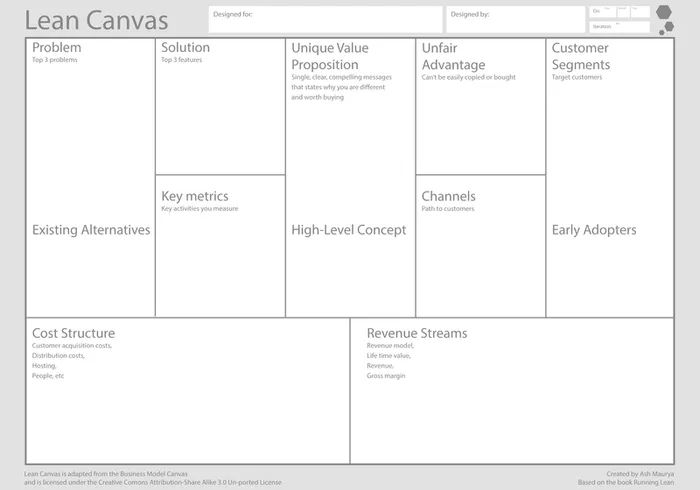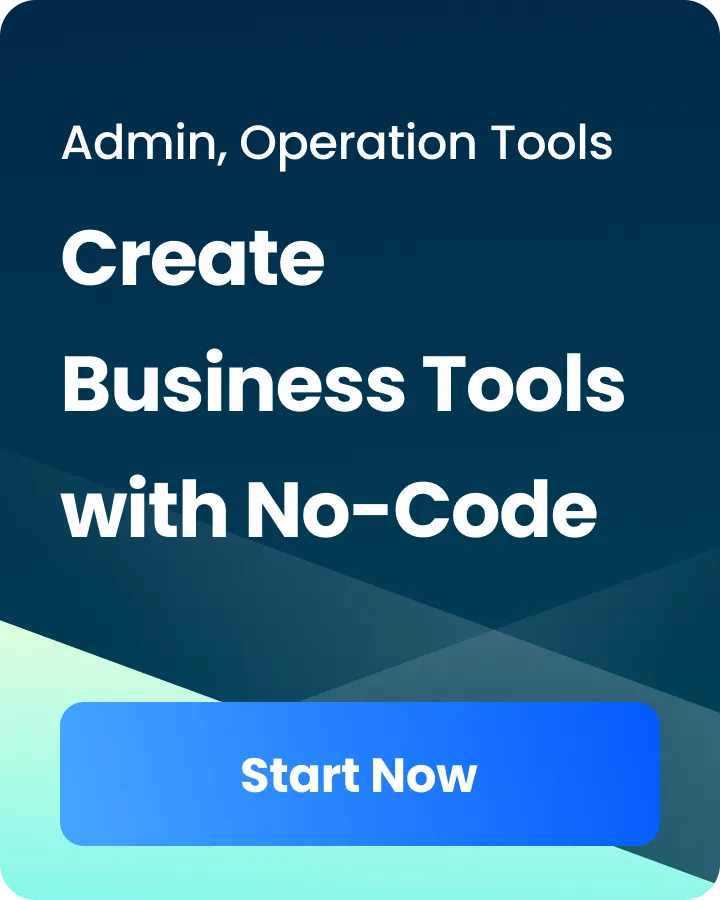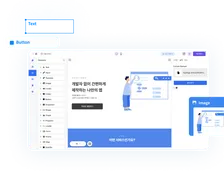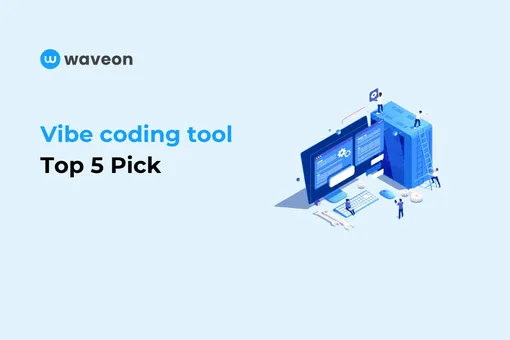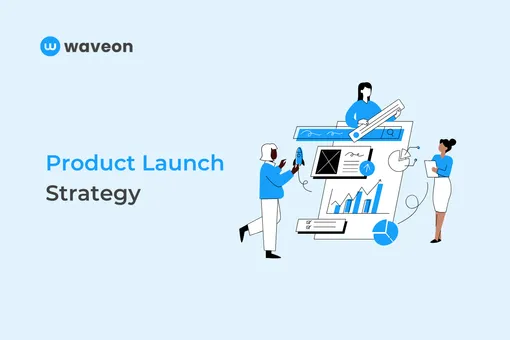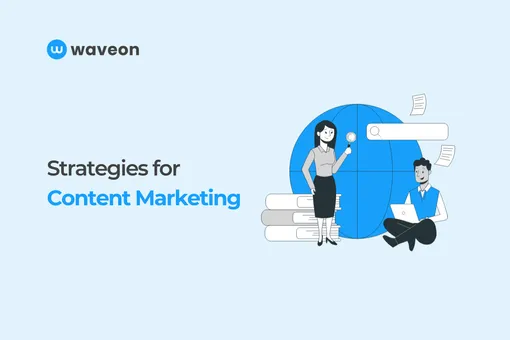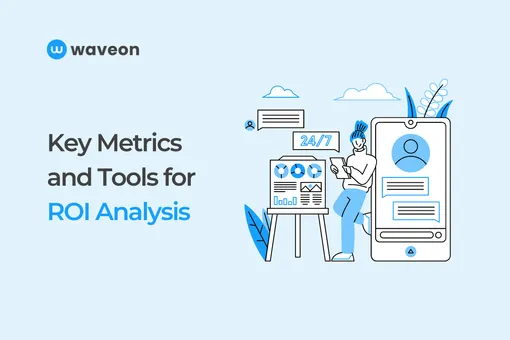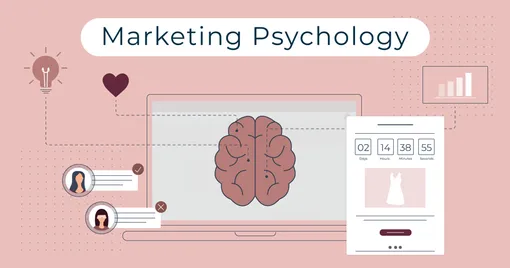Insight
What is Lean Canvas?
Waveon Team
1/30/2023
0 min read
TABLE OF CONTENTS
Lean Canvas is a 1-page business plan template that helps entrepreneurs quickly and effectively communicate their business idea and plan. It was created by Ash Maurya, an entrepreneur and author, as a way to simplify and streamline the traditional business plan.
The History of the Lean Canvas
The Lean Canvas, pioneered by entrepreneur Ash Maurya, emerged as a response to the limitations of traditional business plans. While business plans tend to be lengthy and static, the Lean Canvas embraces agility and adaptability. Inspired by the Lean Startup methodology, which emphasizes iterative development and rapid experimentation, the Lean Canvas embodies the essence of lean thinking: doing more with less.
Key Components of Lean Canvas
The Lean Canvas consists of nine key components that must be considered in order to create a successful business. These components are:
- Problem
- Unique Value Proposition
- Solution
- Key Metrics
- Unfair Advantage
- Channels
- Customer Segments
- Cost Structure
- Revenue Streams
1. Problem
The first component of Lean Canvas is the Problem. The purpose of this section is to focus on the problem that the business aims to solve. It is important to give more emphasis on defining the problem as it helps in making informed decisions. Most people tend to think more about the solution than the problem. However, by thoroughly defining the problem, a more effective and efficient solution can be developed and adapted to changes in the business environment.
2. Unique Value Proposition
The Unique Value Proposition component of Lean Canvas allows entrepreneurs to explain how their solution sets itself apart from other offerings available in the market. This section helps to identify the unique selling point of the business. With many competitors already present in the market, customers are more likely to choose a new product if it provides a compelling reason to do so, instead of relying on established alternatives.
3. Solution
The Solution component of Lean Canvas outlines the entrepreneur's proposed solution to the problem they have identified. In the startup industry, the solution can change in many ways as the product or service improves. The market and the problem are relatively stable, while the solution (product) is the only aspect that can be controlled by the entrepreneur. It is acceptable to repeatedly modify the solution as long as the market and problem are well-defined.
4. Key Metrics
The Key Metrics component of Lean Canvas focuses on the metrics that will be used to measure the success of the business. This section is important for setting realistic goals and tracking progress.
5. Unfair Advantage
The Unfair Advantage component of Lean Canvas is where the entrepreneur explains what makes their business unique and gives them an edge over their competitors. This section can include things like proprietary technology, a strong network, or a unique skill set.
6. Channels
The Channels component of Lean Canvas outlines the ways in which the business will reach its customers. This can include things like online marketing, in-person sales, or distribution partnerships.
7. Customer Segments
The Customer Segments component of Lean Canvas concentrates on the specific groups of customers that the business aims to target. Defining the target customer clearly is crucial for successful marketing and sales of the product or service. If the customer segments are not well defined, the business may end up reaching a wide range of customers at a high cost. It is more effective and efficient to clearly define and limit the size of the customer segments.
8. Cost Structure
The Cost Structure component of Lean Canvas outlines the costs associated with running the business. This section is important for understanding the financial feasibility of the business and for setting realistic budgets.
9. Revenue Streams
The Revenue Streams component of Lean Canvas focuses on the ways in which the business will generate revenue. This can include things like product sales, subscriptions, or advertising.
The Benefits of Lean Canvas:
The Lean Canvas offers several strategic advantages to entrepreneurs:
Concise Overview: The Lean Canvas condenses the key elements of a business idea onto a single page, making it easy to understand and communicate the core concept to others, such as team members, investors, and potential customers.
Focus on Value Proposition: The canvas places a strong emphasis on the value proposition—the unique value that a product or service brings to its target customers. This encourages entrepreneurs to deeply understand the customer's pain points and needs, which is essential for building a successful business.
Iterative Approach: The Lean Canvas is meant to evolve as you gather more information and insights about your business idea. It's not a static document; you can refine and update it based on feedback and changing market conditions.
Hypothesis Testing: The canvas prompts you to define assumptions about your business, such as customer segments, channels, and revenue streams. This encourages you to test these assumptions quickly and validate them through real-world experiments.
Quick Decision Making: By breaking down the business idea into its core components, the Lean Canvas helps in making informed decisions about which aspects to prioritize and which to reconsider. This can save valuable time and resources.
Clear Communication: When presenting your idea to others, whether it's potential investors, partners, or team members, the Lean Canvas provides a structured and clear way to communicate your business model and strategy.
Minimizes Waste: Traditional business plans can be lengthy and time-consuming to create, often containing unnecessary details. The Lean Canvas focuses on the most critical aspects of the business, helping to avoid wasting time on unnecessary elements.
Adaptability: As new information emerges and the market landscape changes, the Lean Canvas can be adjusted to accommodate these shifts. This adaptability is crucial in the dynamic startup environment.
Alignment among Team Members: When everyone on the team is on the same page regarding the key components of the business, it becomes easier to align efforts and work towards a common goal.
Saves Resources: Since the Lean Canvas is a concise document, it requires fewer resources to create and maintain compared to a traditional business plan. This is especially beneficial for startups with limited time and funding.
Lean Canvas is a simplified version of Business Canvas
Lean Canvas is similar to Business Canvas, but while Business Canvas is a template used to describe the complete structure of a traditional business, Lean Canvas is designed for early-stage businesses or even businesses that have not yet started. Inspired by the principles of Lean Startup, Lean Canvas provides a quick and efficient way for startups to design their business structure. If you are interested, consider giving Lean Startup a look.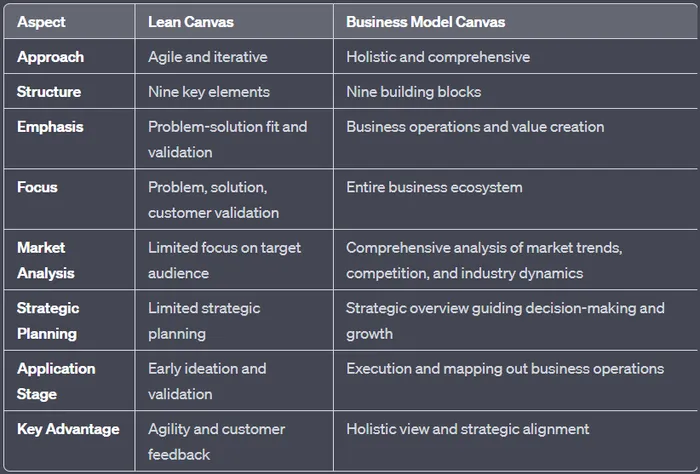
Business Model Canvas:
- Introduced by Alexander Osterwalder and Yves Pigneur in their book "Business Model Generation."
- Consists of nine building blocks that cover key aspects of a business: Customer Segments, Value Propositions, Channels, Customer Relationships, Revenue Streams, Key Resources, Key Activities, Key Partnerships, and Cost Structure.
- Provides a comprehensive and holistic view of an existing or new business model.
- Can be used by established companies to analyze and adjust their business models.
Lean Canvas:
- Developed by Ash Maurya, building on the principles of the Lean Startup methodology.
- Offers a more focused and simplified approach tailored for startups.
- Comprises nine building blocks as well, but with a specific emphasis on the core elements crucial for startups: Problem, Solution, Key Metrics, Unique Value Proposition, Unfair Advantage, Channels, Customer Segments, Cost Structure, and Revenue Streams.
- Places a strong emphasis on validating assumptions and iteratively refining the business concept.
- Is designed to be a dynamic tool that evolves as the startup gathers more information and feedback.
Conclusion
In the intricate landscape of startup entrepreneurship, the Lean Canvas shines as a guiding star. By dissecting the essential components of a business idea, entrepreneurs can chart their course, staying focused on their mission while embracing the dynamic nature of innovation. In an era where adaptability and responsiveness are paramount, the Lean Canvas empowers startups to turn their visions into reality, one canvas at a time.

